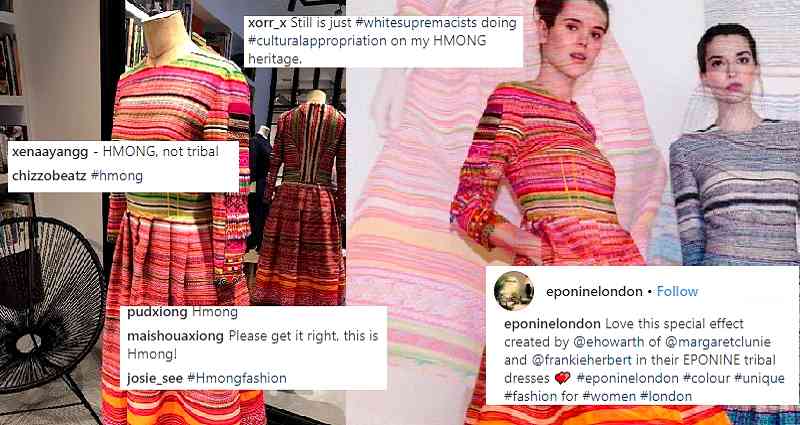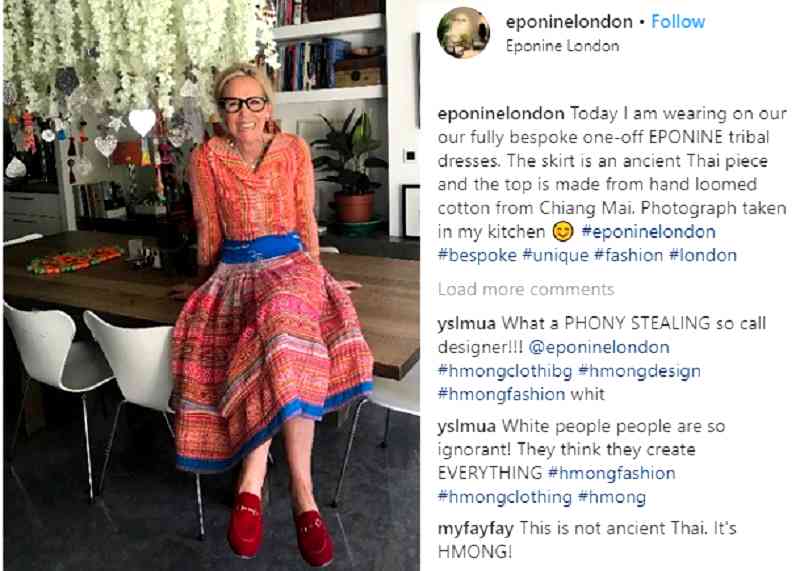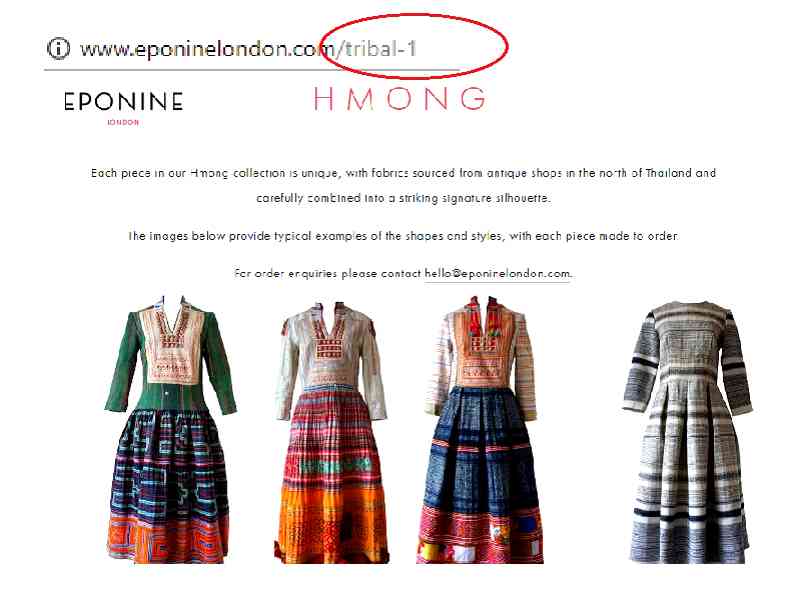London Fashion Brand Sparks Outrage For Labeling ‘Hmong-Inspired’ Designs as ‘Tribal’


By Ryan General
May 22, 2018
London fashion label Eponine incited furor on social media after featuring a new clothing line — obviously inspired by Hmong traditional garb — merely labeled “tribal.”
Not only did the designers appropriate a marginalized culture, they also gave it a generic description, which appears to be a deliberate attempt to devalue the Hmong clothes’ cultural significance, as pointed out by a piece in Hmong American.
“This is not a tribal dress. We are not tribe. We are Hmong,” wrote Jin Thao. “The language and history of our People have been sown into our outfits to preserve our culture.
Some criticized the double standards people have when an actual person of color wears his/her traditional clothes versus a Caucasian who wears same clothes for being “exotic”, “ethnic” or in this case, “tribal”.
“When I see this I question why is it that when a white person wears Hmong clothes, they are praised, congratulated and adored,” user Michelle Xiong laments. “Whereas if a Hmong person wears Hmong clothes, it goes entirely unnoticed, if not criticized, made laughable or get weird looks. It bothers me that this unknown white person is applauded for “appreciating” Hmong attire. I’m sure she has never heard of Hmong people. It’s just “tribal” to her.”

In response to the typical “appreciation, not appropriation” justification of similar acts, netizens pointed out that the brand’s use of the design is mainly for business and not for the appreciation of an honored tradition.
“Their intention is to make money, not exposure for our arts or people,” netizen Bao Lee writes. “That’s cultural appropriation, not appreciation. They label us as “tribal”. What about that is to be proud of?”
“People look down upon us being tribal, they think we’re still barbaric and backward. Why do we praise the white people so much when they wear our clothes or arts? And we call it exposure, and we say “at least now people see our art”. No, they don’t see our art, they see tribal art, they see opportunities to profit from our art. They want our art but not our oppression.”
Following the social media outrage, Eponine’s website has since updated the page dedicated to the designs with a Hmong header, although the site’s permalink still indicates the page as “tribal.”
While some of the social media posts featuring the designs have already been edited to include references to Hmong clothes/fabrics, a lot of the designs are still labeled only as “tribal.”
Hmong textile art is known for its colorful embroidery consisting of bold geometric designs in bright, contrasting hues. Within the global Hmong community, there are a variety of patterns and techniques of production are associated depending on the community’s geographical regions and cultural subdivisions.
Featured image via Instagram / eponinelondon
Share this Article
Share this Article
